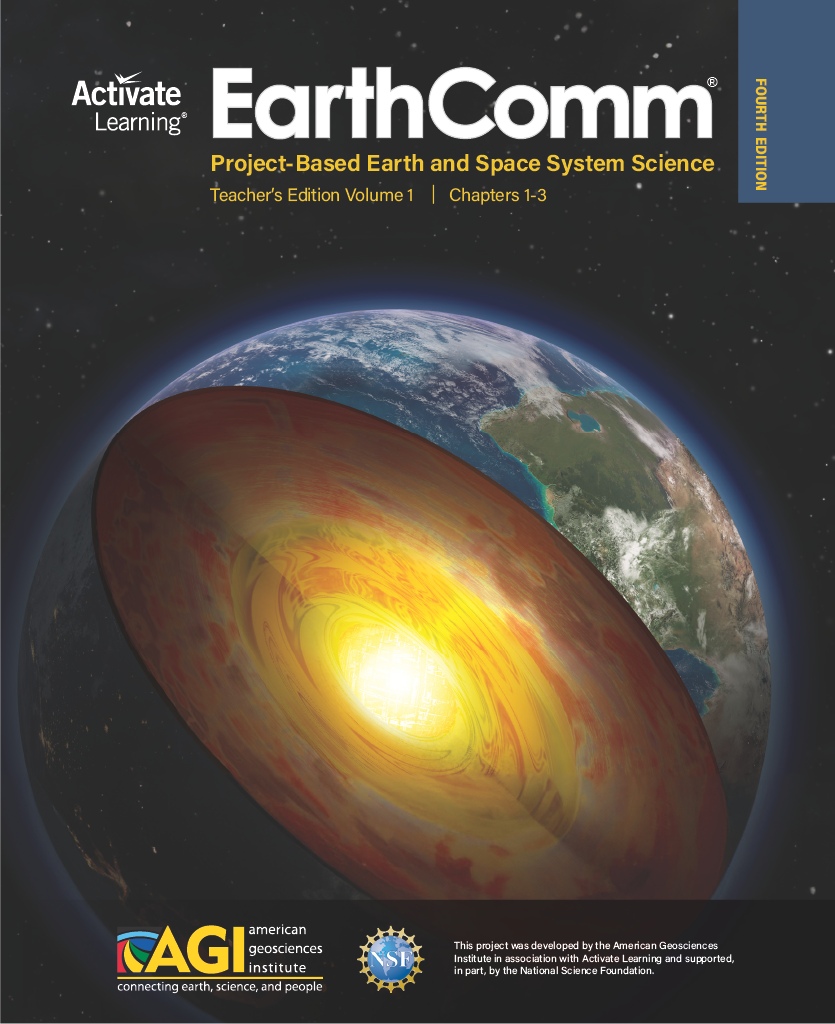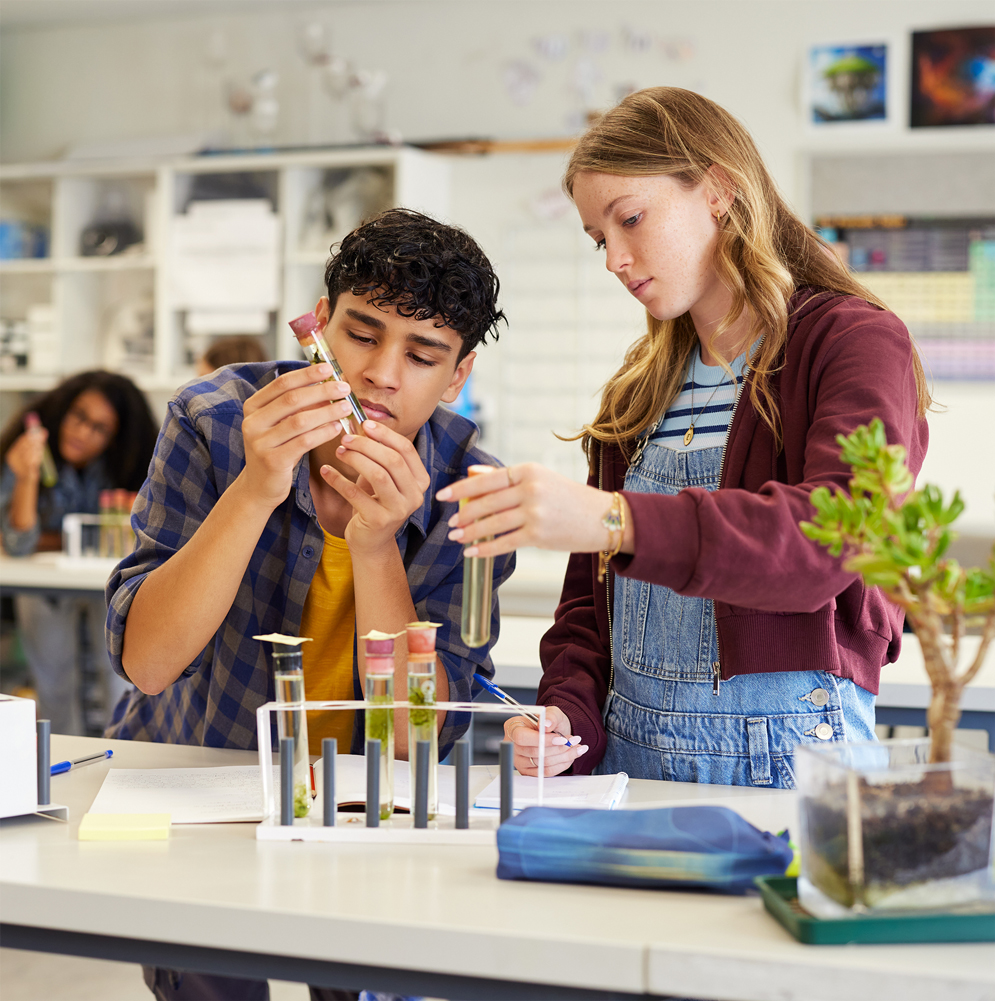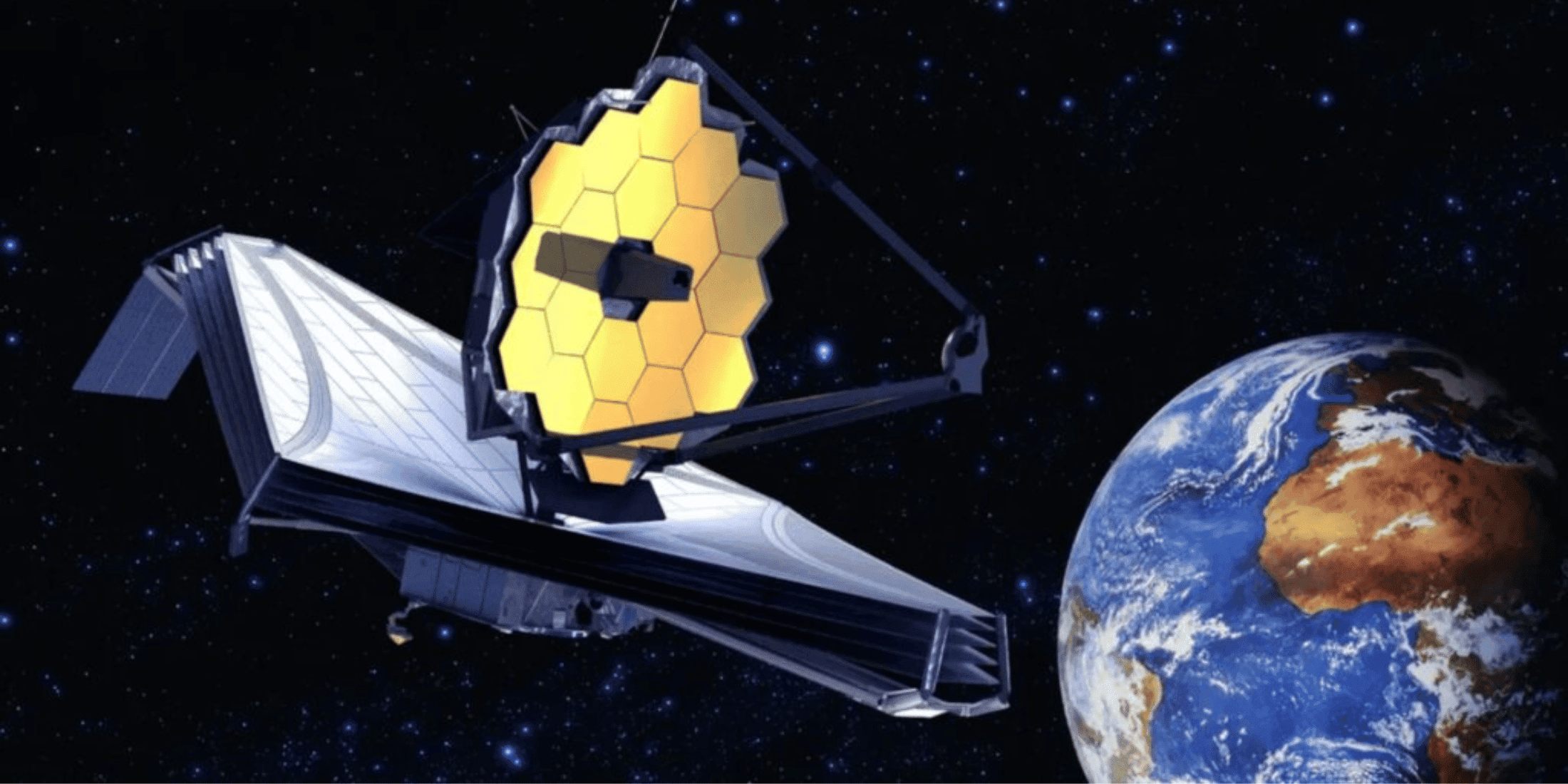
Project-Based Earth and Space System Science
A full-year Earth and Space System Science curriculum developed by the American Geosciences Institute. The philosophy and design of EarthComm’s Fourth Edition, Project-Based Earth and Space System Science supports the key conceptual shifts in the Next Generation Science Standards.
This Earth Science curriculum adopts the philosophy of three-dimensional learning, which is closely related to its original design.
Available as a package or for individual purchase
Teacher Edition, Student Edition, and Student Chapter Books
Digital
Interactive Content on the Activate Learning Digital Platform
Kits
All materials necessary for investigations for all chapters
Professional Learning
Full implementation support and certified professional learning
Three-Dimensional
Project-Based Approach
EarthComm embraces the three-dimensional learning of the Next Generation Science Standards, seamlessly integrating science and engineering practices, crosscutting concepts, and core ideas.
Students Learn Like Scientists and Engineers
Students use the same iterative Engineering Design Cycle employed by geoscientists and engineers, work collaboratively in groups, and engage in scientific discourse.
Total Support
for Teachers
Professional Learning and ongoing support is provided by our team of education specialists.
Need more info to decide if this the right curriculum for your district or school?
EarthComm Curriculum Details
EarthComm is a comprehensive, project-based, secondary-level Earth and Space science program.
It includes student learning materials, teacher resources, teacher-support networks, and assessment tools. EarthComm also features a robust website filled with student and teacher resources and videos regularly updated by the American Geosciences Institute.
-
Chapter Challenges
Interesting and meaningful Chapter Challenges motivate students to learn and remember the Earth-systems science content.
-
Crosscutting Concepts
Science and engineering practices, crosscutting concepts, and core ideas are seamlessly integrated throughout the EarthComm curriculum.
-
NGSS Alignment
Download the EarthComm program brochure to view the detailed NGSS alignment.
-
Project-Based Active Series
Explore the project-based Active Series for Chemistry, Physics, and Physical Science to complement our EarthComm curriculum.
EarthComm Research-Based Design
EarthComm promotes systems thinking.
In EarthComm, students learn about the interactions among the various parts of the Earth system by reflecting on the ways in which matter and energy flow through the Earth system, and the different ways in which Earth’s processes occur over time and space.
EarthComm fosters Earth stewardship.
With EarthComm, students discover the wonder and importance of Earth and space science by studying it where it counts — in their community. EarthComm utilizes local and regional issues and concerns to stimulate problem-solving activities and to foster a sense of Earth stewardship by students in their communities.
EarthComm fits your standards.
EarthComm reflects the full scope of Earth and space science content standards for high school, those identified as the Disciplinary Core Ideas in A Framework for K-12 Science Education, and those of individual states and districts.

New!EarthComm 4th Edition: Updated and Sustainability-Focused
The NEW edition of EarthComm provides support for exploring ways that Earth Science is relevant across all sectors of society! This updated edition builds on EarthComm’s established approach of systems thinking combined with project-based learning by integrating sustainability as a central theme throughout the course. The sustainability theme highlights the interconnections between human activities and Earth's systems, providing a rich context for student learning.
New Sustainability Features in the EarthComm Curriculum
- An introduction to sustainability and the Sustainable Development Goals (SDGs) has been added to the book’s introductory material, offering a foundational understanding of global sustainability challenges as they relate to Earth & Space Science.
- Specific Targets and Indicators of the Sustainable Development Goals (SDGs) have been highlighted, demonstrating how understanding Earth & Space Science concepts can contribute to achieving these goals.
- “Considering Sustainability” sidebars have been added throughout the chapters to keep sustainability and real-world applications of concepts at the forefront of students’ minds as they engage with the content in each chapter.
- Revised “Earth/Space Sciences at Work” pages for each chapter relate the learning to updated sets of careers, the SDGs, and Earth systems, helping educators and students draw clear links between academic concepts, career pathways, and how Earth & Space sciences help people address real-world issues.
- In the Teacher’s Edition, teaching tips on integrating sustainability into the curriculum have been provided, offering guidance on how to incorporate sustainability into classroom discussions and activities.
- The EarthComm support site has been updated to include resources related to all new sustainability-related additions to the textbook.
- In addition to adding sustainability, EarthComm was also revised to include the latest data, real-world examples, and resources.
Updates to the Content in the EarthComm Curriculum
- Data tables, graphs, maps, and other visualizations have been updated to include recent information, ensuring that students are exposed to current data and trends in Earth science.
- Recent real-world examples of phenomena and technologies have been incorporated into the content, offering students up-to-date, relevant case studies to reinforce the concepts being taught.
- The flow of passages has been smoothed for readability, enhancing the overall clarity and ease of understanding for students, making the text passages more approachable and easily understood by a wider range of learners.
- Additional images have been included to directly support the text and provide visual context, as well as to indicate sources of images, ensuring that students understand the origin and credibility of visual materials.
- The EarthComm support website has been updated to include additional online resources related to the content in each chapter section, especially new examples, data sets, and sustainability-related material that has been added to the book.
- An updated view of the Earth on the cover is accompanied by a description of illustration that brings to light the interconnectedness of Earth’s systems.
EarthComm CurriculumSupport Website
Digital Platform
The Activate Learning Digital Platform (ALDP) hosts the interactive digital edition of the EarthComm teacher and student curriculum materials.
The platform is designed for student accessibility and inclusion and offers embedded translation for over 130 languages and text-to-speech with read-along highlighting in 35 languages.
Featuring an intuitive user experience, teachers have everything they need to Plan, Teach, Assign, and Assess lessons in a platform that is integrated with leading SIS rostering and Learning Management Systems such as Google Classroom, Schoology, and Canvas.

EarthCommScience Kits
Science equipment and materials are an essential element to investigation-centered learning, and Activate Learning offers science kits to support every activity in each unit for EarthComm.
- All products are rigorously tested for quality assurance.
- Materials are grouped by student and teacher kits.
- Teacher kits include all durable and consumable materials to support the teacher during classroom demonstrations.
- Student kits are organized to allow groups of 3-4 students to conduct investigations, and each kit contains durable and consumable materials to support up to 160 students.
- Student-oriented kits allow teachers with both large and small classes to teach with fidelity and manage the classes more efficiently.

About The Authors
Select an author to learn more about their contributions to the fields of physical science, geology, Earth system sciences, and science education.



